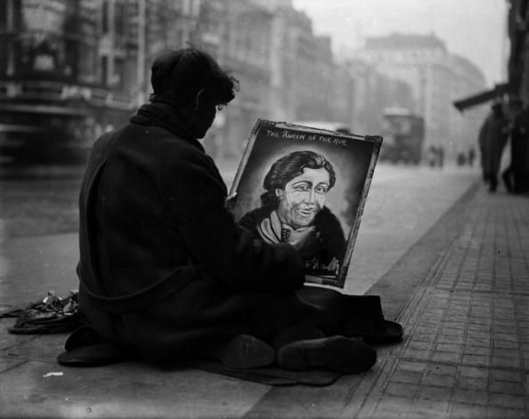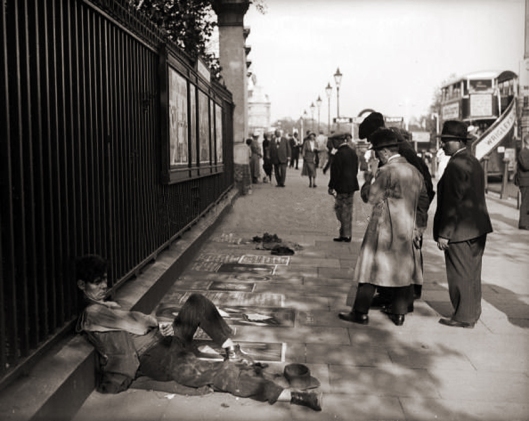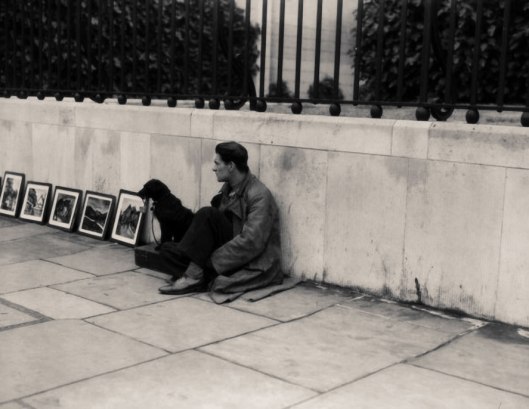Tags
1930's, art, artist, arts, battle, beggar, beggars, begger, beggers, bully, bullying, canvas, chalk, chalker, chalking, chalks, england, extortion, gangs, history, london, money, news, pavement, pavement art, paving, philip, pitch, protection, racketeers, screever, screeving, social, stone, street, uk, urban, urbancanvas
The gangs who terrorised London Pavement Artists!
It’s easy to look at the past through rose tinted glasses, painting a romantic picture of the Romany life of the pavement artist, but the reality was very different; unlike today’s street painters, there was no soft cushion of an organised event.
Pavement artists lived on the fringes of society, a lawless wild west with dangers to be faced every day. I have read reports of artists being robbed, beaten-up and even kidnapped and murdered by criminal gangs; this came on top of the threat of arrest by the police for begging and vagrancy.
In the 1930’s, there was a touch of American gangsterism about claims that London’s pavement artists had been terrorised by racketeers. Out of every shilling collected by the artist, eight pence would go to the bullies for “protection.”
The screever treasured his little bit of pavement. The flagstones the serious artist used for his canvas, required months of preparation and smoothing to make the “pitch” just right. Gangs would watch this work with great interest, when the artist had settled down he was told he needs “protection.” If he does not agree to pay, his life would become unbearable.
It would start with minor irritations….a broken bottle of oil, accidentally spilled by a careless passer-by, just after the morning’s work is finished, making a re-drawing necessary. Before long, the pavement artist is glad to have “protection.” It saves him from being beaten up and robbed on the way home, or his pitch being covered in petrol and tar. Artists where often forced to buy their chalks from the gang boss, at extortionate prices.
Pitches which are worked with movable pictures (boardmen) were milked differently. Artists had to “rent” the pitch by the hour, and even the pictures where rented from criminal gangs. Certain artists where helped by babies and dogs, hired from the gang, a pathetic-looking dog would cost more to hire than a good-looking dog.
Artists without fixed pitches where the most difficult to deal with, so racketeers would send out “inspectors” who would travel across London, working on commission and extorting money from the casual screever or beggar.
This became a lucrative trade for criminals, with so many artists and musicians working the streets every day.
It became so bad in the 1930’s, that artists even considered forming their own union to help combat intimidation from bullying street gangs. This was not a new trick of course, and reports go back to the mid 1850’s when artists shared the streets with dancing bears, bull baiters and dog fighting gangs.
Written & researched by Philip Battle
Visit my Artists of The Paving Stone page on Facebook!




Fascinating information. Thank you.
Thanks Bill….glad you liked it! 🙂
here’s a London Story you might like:-
Loved the Hachiko & Giro stories Bill, nicely written….reminded me of my own doggy tales; SCREEVER DOGS!
http://screever.org/2012/10/01/screever-dogs-1930-1948/